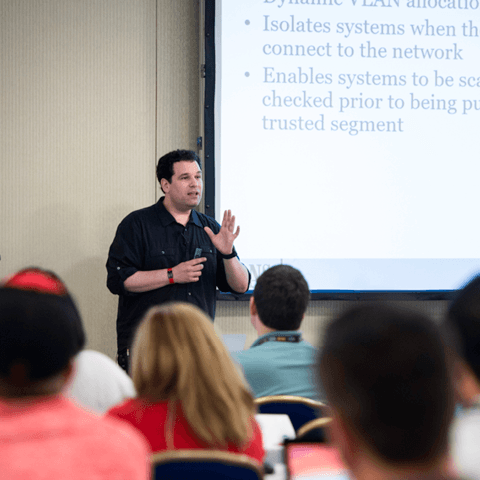SEC595: Applied Data Science and AI/Machine Learning for Cybersecurity Professionals


Experience SANS training through course previews.
Learn MoreLet us help.
Contact usBecome a member for instant access to our free resources.
Sign UpWe're here to help.
Contact Us
Apply your credits to renew your certifications
Attend a live, instructor-led class at a location near you or remotely, or train on your time over 4 months
Course material is geared for cyber security professionals with hands-on experience
Apply what you learn with hands-on exercises and labs
Acquire practical data science and machine learning skills to build custom AI-driven security solutions that transform your organization's threat detection capabilities.
The course content's design is superb in my opinion. It begins by covering the fundamentals of data extraction from diverse sources using Python, followed by a dive into the basics of statistics. From there, it delves into ML models and DNNs. I appreciate the thoughtfulness behind this progression.
Harness practical data science and machine learning in cybersecurity. This course transforms complex AI concepts into accessible tools through hands-on labs comprising over 70% of class time. Designed specifically to focus on machine learning in cybersecurity, the course prepares students to apply AI techniques to real-world security problems—making it a powerful option for those pursuing the GMLE certification (GIAC Machine Learning Engineer for Cybersecurity).
Participants solve actual security challenges using statistical models, probabilistic tools, and neural networks rather than engaging in theoretical discussions. You will develop skills to extract, analyze, and visualize security data, construct predictive models for threat detection, and implement anomaly detection systems.
The curriculum achieves an optimal balance between essential theory and practical application, requiring only intermediate Python skills and basic mathematics knowledge. Security professionals gain immediately applicable techniques for enhancing security operations, incident response, and threat hunting through targeted AI implementation.


David Hoelzer has fundamentally advanced cybersecurity by pioneering the GIAC Security Expert (GSE) certification, leading AI-driven threat detection initiatives, and developing MAVIS, an open-source ML tool enhancing code review processes.
Read more about David HoelzerExplore the course syllabus below to view the full range of topics covered in SEC595: Applied Data Science and AI/Machine Learning for Cybersecurity Professionals.
On day one we focus on essential Python skills for data acquisition and manipulation in security contexts. Students will learn methods for retrieving data from SQL databases, NoSQL document stores, and web sources. This foundation enables effective data collection for subsequent analysis and machine learning applications in security operations.
Section two covers the statistical foundations necessary for effective security data analysis. Students learn to apply statistical measures to security datasets, interpret probability distributions, and use Bayesian inference for security decision-making. These skills form the basis for understanding anomaly detection and predictive security analytics.
This introduction to machine learning techniques focuses specifically on security use cases. Students explore supervised and unsupervised learning approaches for threat detection, classification, and anomaly identification. The section progresses from basic clustering methods to advanced classification algorithms; all applied to security datasets.
Our exploration into deep learning methods addresses advanced security challenges. Participants discover ways to design, train, and evaluate neural networks for security applications including malware detection, phishing identification, and behavioral analysis. We also cover network architectures optimized for security data types and formats.
This section focuses on convolutional networks and autoencoder architectures. The first half concentrates on CNNs for text classification and zero-day malware detection, while the second half examines autoencoder fundamentals, latent representations, and reconstruction loss functions for signature-free anomaly detection in logs and network traffic.
This section focuses on practical implementation of complex neural networks using TensorFlow's functional API. We also cover effective synthetic data generation, data augmentation, genetic hyperparameter optimization, and deployment strategies including standalone solutions for time-critical applications and containerized approaches using Docker/Kubernetes.
Responsible for analyzing data from multiple disparate sources to provide cybersecurity and privacy insight. Designs and implements custom algorithms, workflow processes, and layouts for complex, enterprise-scale data sets used for modeling, data mining, and research purposes.
Explore learning pathThis role conducts conducts cybersecurity research and development. Find the SANS courses that map to the Cybersecurity Research & Development SCyWF Work Role.
Explore learning pathAdd a GIAC certification attempt and receive free two practice tests. View pricing in the info icons below.
When purchasing a live instructor-led class, add an additional 4 months of online access after your course. View pricing in the info icons below.
Automation is a critical skill in the field of cybersecurity. SANS SEC595 addresses this need by focusing on using Python to automate security tasks, making it highly relevant to the industry's demands.
I really like that this is pulling from experience rather than a textbook. The added anecdotes about the history behind various topics really helped pull it together for me.
This course covers a wide breath with great depth. I am excited to apply everything after the course.
AI/ML for cybersecurity is poorly understood and misrepresented too often. This course provides that balance between what management needs to know in order to grow understanding of the technologies and hands-on experience.

Get feedback from the world’s best cybersecurity experts and instructors

Choose how you want to learn - online, on demand, or at our live in-person training events

Get access to our range of industry-leading courses and resources